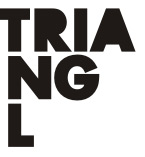Underground Water
Underground water can be contaminated when there is major contamination of rock-bed. Disadvantageous geological conditions such as the permeability of soil profile and high level of underground water often lead to these contaminations. Purum Ltd. carries out these:
Remediation Drainage of Underground Water
Underground water is drained by remediation wells into remediation station. Polluted substances are removed by gravitational separation and sorption. It is the most used technology with a broad range of use.
Assisted Bioremediation, Biosparging
Microbial activity of microorganisms for decomposition and biotransformation of pollutants on nontoxic products is used in this method. Bioremediation of underground waters can be supported by biosparging where air is pumped into underground water. This leads to a higher concentration of oxygen and promotion of chemical and biological oxidation of organic pollutants. This method is suitable for organic pollution in wide range, nitrates, sulphate, organic acids etc.
Air-Sparging
Pumping of compressed air underwater is used in this method as well. Effective net of air-sparging bores is drilled. That improves effectivity of pollutants removal. Air bursts through bore filter and soil pores and raises to underground water level. Air rising through contaminated layers of saturated zone links volatile compounds of contaminants form soil and underground water. This carries contaminants to non-saturated zone. Volatile compounds are then aspired by venting system. Air-sparging is used for removal of volatile compounds, diluters, chlorinated hydrocarbons, etc.
Natural and Stimulated Attenuation
Natural chemical, physical and biological processes are used to lower mass, volume and concentration of pollutants and theirs transformation to less dangerous and toxic compounds. Natural attenuation progresses without active intervention. Only changes are monitored. Stimulated attenuation is based on the same principles with assistance to optimize biological degradation and transformation. Water is mixed by re-pumping the supplement of compound that works as acceptor or donor depending on contamination. Attenuation is used only for smaller volume of contaminants as is organic pollution, inorganic metals, arsenic, selenium, nitrates etc., and is conditional to natural ability of environment to decompose contamination.
Other Methods of Remediation of Underground Water
Other methods of decontamination can be used in accordance to individual characters of location, outcomes of survey and in relation to other actualities. These methods include bioreactors, reactive barriers and air-striping. Classical methods as neutralization and demulsification are ex situ technics that are done only in our plants.






